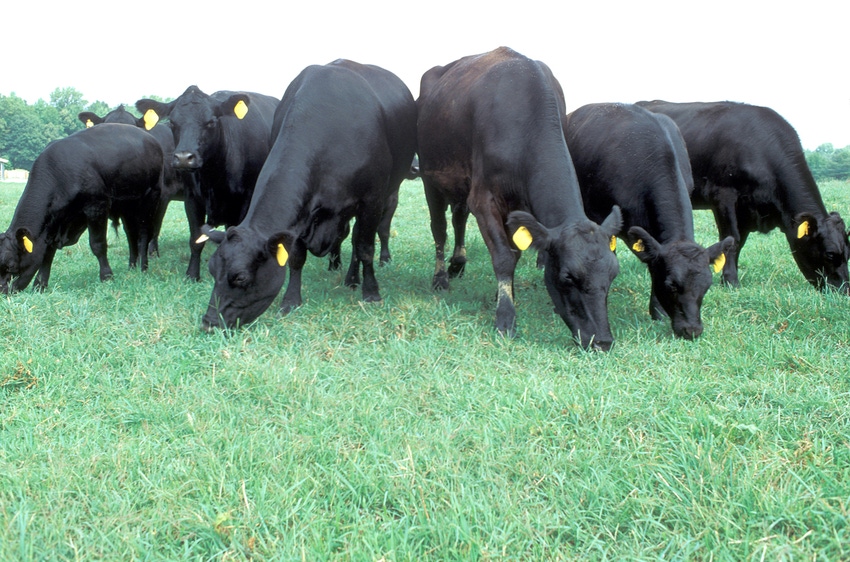
Eating satisfaction relates to USDA quality grades. The grades, from the top, are prime, choice, select and standard. Restaurants find that only one in 26 prime steaks will be sent back to the kitchen by an unhappy diner. However, if select steaks are served, one in five will be returned. “At 20 percent, that’s way too high a probability of a poor eating experience,” Corah said.
January 25, 2012

Consumers are upgrading their beef buying habits. They prefer steaks of choice and prime U.S. Department of Agriculture quality grades. Supermarkets noted that demand shift and filled more of their meat cases with high-quality beef.
Now, producers must meet that increasing demand as buyers pay more for high-quality beef. Price premiums are paid for calves that grade choice and prime.
In recent years, there was little price difference paid for choice over select grades of beef. However, in recent weeks premiums for higher quality grades continue to increase.
Those lessons in beef marketing were told by Larry Corah, vice president of Certified Angus Beef, at a meeting of northwest Missouri farmers in King City, Mo. CAB is a nonprofit group marketing beef for the American Angus Association.
There’s a reason people prefer high-quality meat. “A properly cooked prime steak will likely be tender, juicy and flavorful. Those characteristics make for an enjoyable eating experience,” Corah said.
Chefs at white-tablecloth restaurants learned that high-quality beef keeps customers coming back. “If you pay big bucks for dinner, a tough steak gets your attention,” Corah said.
Eating satisfaction relates to USDA quality grades. The grades, from the top, are prime, choice, select and standard. Restaurants find that only one in 26 prime steaks will be sent back to the kitchen by an unhappy diner. However, if select steaks are served, one in five will be returned. “At 20 percent, that’s way too high a probability of a poor eating experience,” Corah said.
Much of a quality grade depends on the amount of marbling in a steak. Marbling indicates the flecks of fat between muscle cells in a steak. Marbling brings tenderness, juiciness and flavor.
Presently, only about 3 percent of carcasses at U.S. packing plants grade prime. However, 40 percent grade select.
For marketing under the CAB brand, carcasses must grade prime or high choice. About 20 percent of plant-run carcasses qualify for CAB premiums.
Farmers have control over how steaks will grade. “While genetics is very important, nutrition, health and management all play a part,” Corah said.
Bull selection is a starting point. Records show that of calves from the top 10 percent of Angus bulls, 4 percent grade prime. But only 1 percent grade prime from the bottom 10 percent of bulls. Also, carcass weight of calves from the top bulls averages 750 pounds while carcasses of calves from the bottom 10 percent of bulls average 100 pounds lighter.
“Calves can have both quality and weight gain,” Corah said.
Corah pointed out that calves from the University of Missouri Thompson Farm, Spickard, Mo., average 31 percent prime, far above national average. Also, the calves have 86 percent acceptance for CAB premiums.
For now, 10 percent of all CAB beef comes from Missouri herds, Corah said. That means Missouri producers can gain a bigger share of the premiums.
Most of the MU calves are sired by artificial insemination from performance-proven bulls. AI gives access to the top sires in a breed.
“There’s a myth that there is no money to be made by producing high-quality cattle,” Corah said. Records show that quality-grid premiums paid to the top 25 percent of calves were $122 over market price last year. Premiums for calves in the top 50 percent averaged $95 over market.
With current premiums those dollars could double this year, Corah added. He told producers that there is a Missouri recipe for high-quality calves.
Management practices such as birth sequence affect quality grade in the recipe. Of calves in the first 25 percent of birth dates, 85 percent will receive CAB premiums. But of late calves, the last 25 percent born, only 11 percent qualify for CAB.
With timed AI, more of the calf crop will be born early in the calving season, bringing a more uniform calf crop.
In his presentation, David Patterson, MU beef reproduction specialist, outlined research for breeding by appointment at the Thompson Farm, a part of the Missouri Agricultural Experiment Station.
The Missouri Recipe produces high-quality replacements in the Show-Me-Select Heifer Program. Heifers can be enrolled for the 2012 breeding season by contacting regional livestock specialists through county MU Extension centers.
You May Also Like



